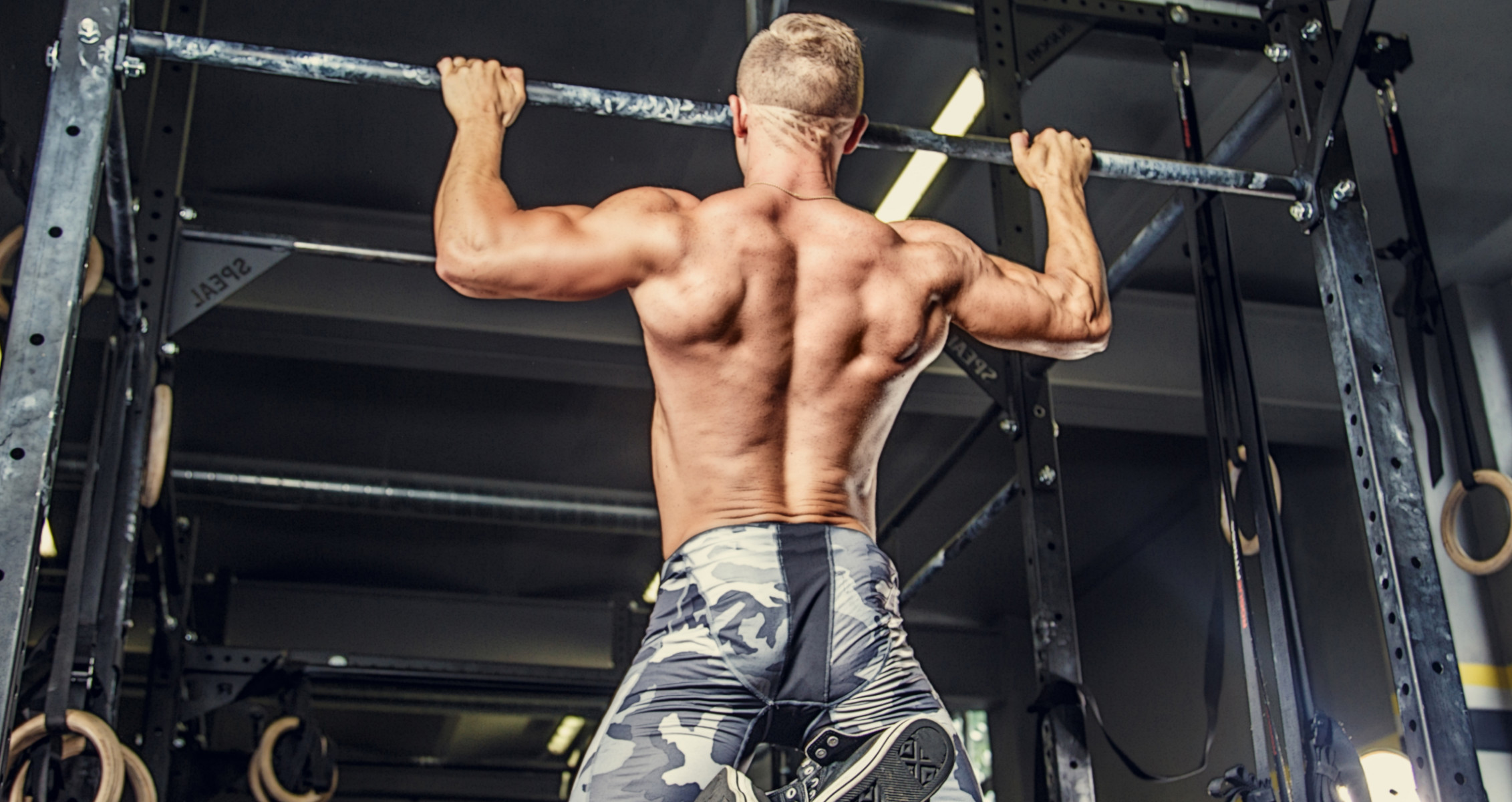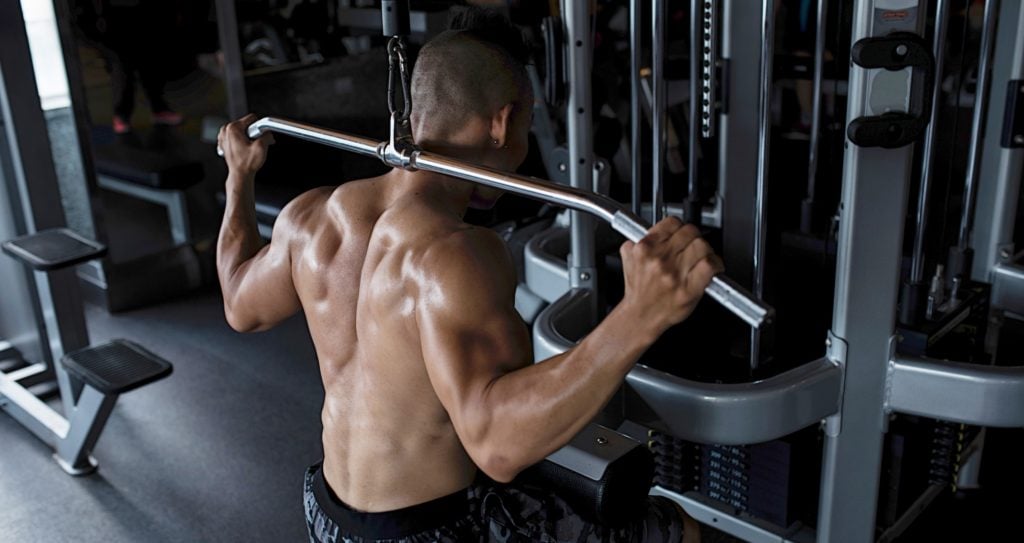Programming Vertical Pulling
Achieving a chiseled body requires a lot of work and some methodical training. And by methodical, I’m talking about doing a bit more vertical pulling. Vertical pulling exercises (pull-ups and pulldowns) stresses a lot of muscles, but particularly the lats, biceps, and upper back muscles. As a result, you get a wider and fuller back along with some juicy biceps. You can even make the argument that with enough vertical pulling, horizontal pulling becomes obsolete.
Let’s talk about how to incorporate 2 key vertical pulling variations.
1. PULL-UPS/CHIN-UPS

STANDARD GRIP
Pull-ups use an overhand grip which targets the mid/lower traps more especially if you arch your back which you’ll likely have to in order to get the bar to tap your chest. Pull-ups are generally harder to perform.
On the other hand, chin-ups target the biceps more and are easier to perform. I prefer to start females with chin ups and males with pull ups. Women also have more mobility and anecdotally, they seem to tolerate the wrist position better than men.
As for setting up the exercise, be sure to use a box or some sort of assistance to the bar. Jumping up the bar is fine too, but can cause some momentum being used the first few reps. Not a good habit.
Anyways, with pull-ups the standard grip is about 5 inches wider than shoulders. With chin ups, you’ll be a couple inches closer in, but feel free to adjust based on personal preference on both. Then lift your body until your chest touches the bar. Chin being over the bar is not enough. There is still room for muscles to shorten if your chest isn’t touching the bar. Pausing at the top for about a second can help you lower with control.
Rinse and repeat for gains.
NEUTRAL/HAMMER GRIP PULL-UP
Some people may experience elbow pain when doing either pull-ups or chin-ups because the wrist positions aren’t as natural especially with chin-ups.
Switching to a neutral or hammer grip often solves any joint pain. This is the position where your palms are facing each other and many pull up bars should offer this grip position.
This position is also great for lat development.
If joint pain is still an issue, the most joint friendly position isn’t on a fixed bar. Instead find a way for the wrist and elbows to move freely based on your anatomy. Gymnastic rings will be your best friend.
This is the most pain free variation although it’s also the most unstable, so it can be suboptimal for hypertrophy if you’re not strong or stable enough.
MODIFICATIONS
If you’re too weak to do full range pull-ups. You can use the assisted pull-up machine or add a band to assist you.
As you get stronger, use less weight to assist you or use a lighter band to lighten the assistance.
If you’re too strong for unweighted pull-ups and chin-ups, add weight or pause longer at the top of the exercise.
2. PULL-DOWN

EXECUTION
Sit comfortably with feet flat on the floor. Adjust the height of the bar where your outstretched arms is grabbing the bar. You may have to stand to do so.
Take a wider grip. This is the standard position. We can get fancy with grips later.
Then find a stable seated position. Pull the bar towards your chest using some, but minimal momentum. Keep your forearms straight and bring the bar towards your chest until it touches. Arch your back hard and this will give you a very full range of motion that biases the upper back muscles.
This is a traditional pulldown which I like to call a wide grip pulldown instead of a lat pulldown because the lats don’t produce as much force as most people think in this position.
To make the pulldown more lat focused, use a neutral grip attachment or do single arm version. If possible, you can also change the seat angle so you’re no directly under the handles. This allows your arms to pull from in front of you and to put the lats in a better position to produce force.
Lastly, brace your abs and don’t arch your back to prevent the upper back muscles like the traps and rhomboids from taking over.
That’s a true lat pulldown to hypertrophy the lats.
As always, return the bar slowly with control.
FORM CONSIDERATIONS
Excessive yanking on any vertical pulling exercise can lead to a waste of time or worse, a snapping injury. Beginners should focus on being as controlled as possible.
Once you get more advanced, some momentum is ok to get to the fully shortened position because that’s where most of the tension is during a vertical pull.
This is primarily a back/lat exercise, but it’s also common for people to feel it more in their biceps. This isn’t necessarily bad, but switching to a more pronated grip can help.
Anecdotally, pulling more from the pinky, ring, and middle fingers while using the thumb over grip will reduce contribution from the biceps. Straps or Versa grips also help.
PROGRAMMING CONSIDERATIONS
- The key to overall strength and fitness is to incorporate both over the course of the same program or across multiple programs.
- Pull ups teach you to lift your whole body weight while enhancing the upper body muscles especially the back and biceps. If you load them properly, they can be very fatiguing, so don’t program them too frequently.
- Easier horizontal pulling like db rows and inverted rows make great program additions if you’re keen on improving your pull-ups. These variatons are also less fatiguing.
- Vertical pulling also tax the forearms significantly, so use straps if needed and if possible, don’t pair them with deadlift or row variations.
- Vertical pulling also decompresses the spine and oppose vertical pressing, so supersetting vertical pulling with vertical pressing like overhead presses are a great idea.
- Aiming for a variety of rep range will be best for hypertrophy
- At least three sets of vertical pulling per week should be the bare minimum especially for advanced lifters.
- Switching between upper back and lat focused variations or switching grip width is great for variation.
For more news and updates, follow Generation Iron on Facebook, Twitter, and Instagram.








